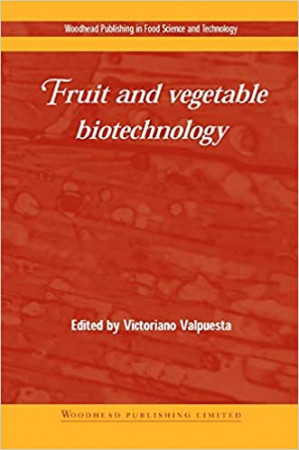Fruit and vegetable biotechnology
Keterangan Bibliografi
| Pengarang | : Valpuesta, Victoriano (editor) |
| Pengarang 2 | : |
| Kontributor | : |
| Penerbit | : CRC Press LLC |
| Kota terbit | : New York |
| Tahun terbit | : 2002 |
| ISBN | : 0-8493-1436-4 |
| Subyek | : Biotechnology - food technology |
| Klasifikasi | : 664.024 Val f |
| Bahasa | : English |
| Edisi | : |
| Halaman | : 332 hlm.: ilus. |
Jenis Koleksi Pustaka
E-Book
Kategori Pustaka
Tidak ada kategori
Abstraksi
Biotechnology can be seen as an imprecise term since the harnessing of any biological process could justifiably be called biotechnology. In food processing it could reasonably be applied to processes as long established as bread making and brewing. However, the revolution in our understanding of the molecular mechanisms underlying the processes of life, in particular our understanding of DNA, has resulted in the potential to manipulate those mechanisms for our requirements. This new-found knowledge and ability is loosely termed biotechnology. There are two main applications of biotechnology to fruit and vegetable production: 1. as an aid to conventional breeding programmes 2. its ability to transfer genes between different organisms. This book explores the application of biotechnology in this second area of fruit and vegetable cultivation and their subsequent use in food processing. Chapter 2 describes the basic tools and methods of genetic manipulation, from the selection and isolation of genes to safety issues such as the stability of transgenes. Part I then considers the range of target properties for genetic enhancement, starting with two chapters on how biotechnology can improve quality and productivity in fruit and vegetable cultivation. Chapter 3 looks at the genetic modification of agronomic traits in fruit crops such as herbicide resistance, resistance to plant pests and environmental stresses, increasing yield and fruit quality. Chapter 4 looks in more detail at improving plant defences against pathogens. A group of three chapters then discusses the enhancement of traits which affect final product quality. Chapter 5 considers how biotechnology can help in extending the post-harvest life of fruit and vegetables, an increasingly important issue given the complexity of modern supply chains. Chapter 6 reviews the use of molecular genetics to improve food properties such as nutritional quality and sensory characteristics such as colour and flavour. Given its importance, Chapter 7 looks in more detail at the nutritional enhancement of plant foods. Part II includes three case studies on the application of biotechnology to particular crops. Tomato was the subject of the first commercial release of a transgenic food product, the Flavt Savr tomato with extended shelf life of the ripe fruit, and has subsequently been a particular focus for research in this field. Chapter 8 reviews the range of work. Chapter 9 considers current commercial developments with transgenic potato whilst Chapter 10 reviews work on a range of other vegetables and fruit from melon and cucumber to cabbage, broccoli, cauliflower and lettuce. Finally, Part III looks at the all-important issues of consumer attitudes and risk assessment, with chapters on these issues and identifying GMOs in foods.
Inventaris
| # | Inventaris | Dapat dipinjam | Status Ada |
| 1 | 9199/P1/2020.c1 | Ya | |
| 2 | 9200/P1/2020.c2 | Ya | |
| 3 | 9201/P1/2020.c3 | Ya | |
| 4 | 9202/P1/2020.c4 | Ya | |
| 5 | 9203/P1/2020.c5 | Ya | |
| 6 | 9204/P1/2020.c6 | Ya |
